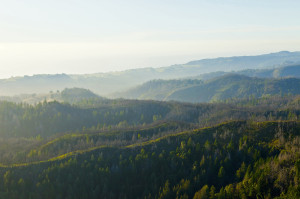It’s unlikely that Save Mount Diablo, or any land trust, will be able to rely on state funds for new projects over the next few years. “Bond indebtedness is maxing out,” says Chuck Mills, associate director for the California Council of Land Trusts. “Until California’s economy recovers, we probably won’t see any new bond-funded projects.”
With a one-two punch of bond freezes and budget cuts, land trusts are cinching their belts while trying to come up with creative ways to continue their work of conserving natural areas and farmlands. At least one land trust has avoided layoffs by reducing staff hours, several have cut back on outreach, and most are holding title to property whose ownership and management they had planned to turn over to the state.
The Land Trust of Napa County acquired the 4,165-acre Wildlake Duff Preserve for $25 million, the largest acquisition it has ever made. The property, adjacent to Robert Louis Stevenson State Park (one of 100 parks most vulnerable to closure), was slated to be handed over to the state. But budget cuts that slice away at the already struggling park system mean the land will have to stay with the trust for now. “We’re trying to think outside of the box, so we can protect the land while allowing limited public access,” says Joel Tranmer, the land trust’s chief executive officer. Save Mount Diablo and Peninsula Open Space Trust are also sitting on land they would prefer to hand over to public agencies.
“California voters consistently support farmland and environmental protection,” says Chuck Mills. “But there is a struggle over how to pay for it. As a community we need to approve fees or find a dedicated revenue stream for land conservation, resource protection, and public access.”

.jpg)



-300x200.jpg)